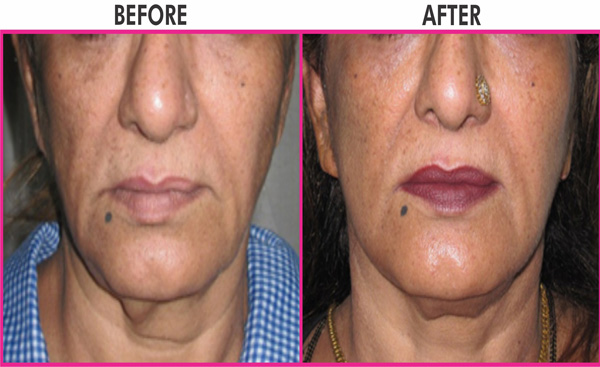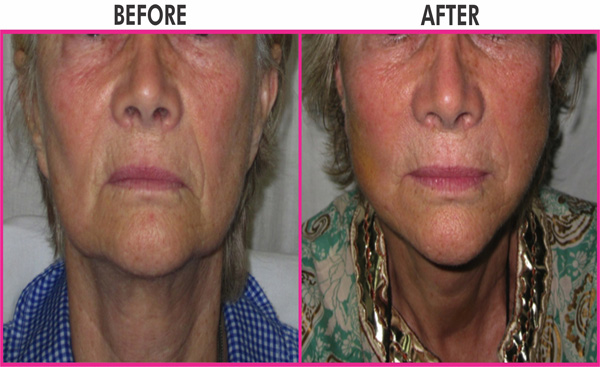
Facelift
Facial aging includes a loss of skin elasticity and firmness, sagging tissue and wrinkles. Sagging in the midface can create a deep crease below the lower eyelid and between the nose and the mouth that may make you appear tired and sad. Fat that has fallen or is displaced and loss of muscle tone in the lower face may create jowls. Loose skin and excess fatty deposits under the chin and jaw can make even a person of normal weight appear to have a double chin. Even droopy eyebrows and neck folds are common signs of aging.
A facelift is designed to correct all aging features, thereby restoring a more youthful, rested appearance with uplifted contours and improved tone in facial skin and underlying muscle. It is a surgical procedure which does not change the basic facial appearance but restores it to a younger version of itself which continues to gae naturally over time.
How is it performed?
Depending on the part of the face requiring facelift, small incisions are created. Fat may be sculpted or redistributed and underlying tissue repositioned. Skin is redraped over the uplifted contours and excess skin is trimmed away. Once healed the incision lines are well concealed within the natural contours of the face. A facelift requires general anesthesia.
What is the period of special care required in the hospital?
A morning to evening stay in the centre is all that is required. However some patients might prefer an overnight stay.
What precautions are to be taken post surgery?
Initial healing may include swelling, numbness or discomfort which can be controlled with medication. Facial movements may be temporarily restricted. Your head needs to be kept elevated at all times until the initial swelling subsides. Also specific instructions as to face and hair cleansing have to be followed.
When can I resume my normal activities?
The face lift healing time and recovery period can last anywhere from one week to several weeks, depending on the type of face lift surgery undergone. Most patients can return to work from a standard face lift in 10 days to two weeks, and patients who choose a mid face lift can expect about the same amount of recovery time. Patients who undergo an endoscopic face lift can return to work in as little as a day or two, and thread face lift and mini face lift patients can expect about the same “weekend” recovery time.









Most Commented